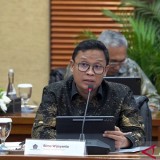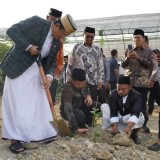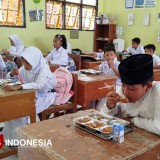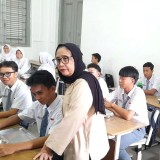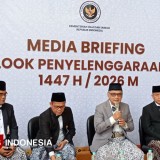TIMES JAKARTA, JAKARTA – At the Asian African Summit held in Bandung on April 24th 2015 to commemorate the 60th Asian African Conference, political leaders of the two continents adopted the Bandung Message 2015, a Declaration on Re-invigorating the New Asian African Strategic Partnership (NAASP) to advance prosperity, solidarity and stability to all their peoples. Its most important action point was the leaders welcoming Indonesia’s decision to establish an Asian-African Centre in Indonesia which will serve as an “institutional support base” of NAASP.
The Summit ended with a series of operational decisions aimed at enhancing the structural and systematic cooperation between the two continents including an Asian-African permanent forum. One of the five key operational decisions is: “strengthening people-to-people interactions, particularly in business, academia, media, youth and sports as well as civil society; encouraging inter¬regional University to University cooperation, including the establishment of an Asian-African Academic Forum to strengthen closer collaboration among higher education institutions and academicians in the two regions; and establishing a network of Asian-African think-tanks to enhance research and assist policy development.”
To promote such university to university cooperation and networks across Asia and Africa, researchers from the State University of Jakarta and Ithuba Knowledge Center of South Africa, initiated a joint research on Best Student Cities at the two countries, Indonesia and Kenya in 2022.
This study aims at finding the best student city across Indonesia and Kenya in 2022 which reflects President Soekarno’s vision on student city in 1953, the spirit of Asian and African Conference in Bandung in 1955, and the Bandung Message 2015.
This study also adapts QS and Times Higher Education (THE) indicators which addresses five major issues concerning with: which city as the best home of reputable universities; which city is the safest for students; which city is the most affordable cost of living for students; which city is the most prospective for students to get a job after graduation; and, which city is the most favorable destination for international students.
Based on those indicators, this study shows various findings. First, out of 514 districts and municipalities across Indonesia, only ten of them host three or more reputable universities. Yogyakarta, Jakarta, Bandung, Surabaya and Bogor appeared to be the top five best student cities which each host Top 500 world class university (WCU). As a WCU, UGM in Yogyakarta stay at the top 231 globally, followed by ITB Bandung (235), UI Jakarta (248), Universitas Airlangga in Surabaya (269) and IPB Bogor (449). While in Kenya, out of 71 cities, only three of them host reputable universities, i.e: Nairobi with five universities, Mombassa and Thika host one each. University of Nairobi (UONBI) stays at the Top 501-600 WCU globally.
Second is safety issues which refer to peaceful life of students at the city. For Indonesia, Semarang was the most peaceful city, indicated by its lowest crime records. Similarly in Kenya, Nairobi stayed as the most peaceful one. Next is student’s cost of living which relates to tuition fees and general living expenses. In Indonesia, Solo appeared to be the lowest living expenses of just USD 200 monthly, while in Kenya, Thika was the lowest one (USD 302).
Fourth is the employment prospect which put Jakarta as the most friendly city to absorb graduates for various job opportunities. While in Kenya, Nairobi was the most prospective one. Fifth, Jakarta and Yogyakarta stayed at the highest score as destinations for international students, and Nairobi for Kenya.
Overall indicators, Yogyakarta appeared to be the best student city for Indonesia in 2022, and Nairobi for Kenya.
Other findings, out of 1,225 universities and higher education institutions (uniRank, 2020) in 54 countries across Africa (UN, 2022), only fifteen of them got WCU recognition. They are in seven countries: South Africa hosts six; Egypt has three, Nigeria two, and Ghana, Ethiopia, Algeria, and Kenya hosts one each (QS and THE, 2022).
While, Asia which consists of 48 countries hosts some 43.6 percent of the total universities and higher education institutions globally (uniRank 2020). Data shows that there are some 28,000 universities across the globe which serve some 220 million students. However, only less than 1,500 institutions listed in four major rankings (UNESCO, Webometrics, Times Higher Education, and QS Stars). Less than ten percent of global university students are enrolled at institutions that show up on one of the four major rankings (Cintana, 2021).
Indonesia itself hosts 4,535 universities and higher education institutions (Dikti, 2022) or about four times much bigger than the total universities across Africa.
With this reality, Indonesia could play strategic role to bridge the two continents by promoting inter¬regional university to university cooperation and networks in research, student and lecturer mobility, join degree, join publication, etc.
Similarly Kenya, as the host of UNEP, has a strategic position to promote inter-regional university to university cooperation and network across Asia and Africa. UNEP works through its division as well as regional, liaison and out-posted offices and a growing network of collaborating center of excellence. At the moment, UNEP has twenty centers of excellence and international research programs, and five of them locate in Asia (Asian Institute of Technology in Thailand; the Institute for Global Environmental Strategies in Japan; the Energy and Resource Institute in India; Chinese Academy of Science in China; and the International Center for Integrated Mountain Development in Nepal), one in Africa (the Institute for Environment, University of Ghana in Ghana), seven centers in USA, two in Australia, two in UK, and Canada, Germany, and France hosts one center each.
UONBI as the best student city across Kenya could strategically play as an “institutional support base” of NAASP to promote university to university cooperation not only between Asia and Africa but also between UNEP centers and NAASP networks across the two continents.
Both UNEP and NAASP indeed, have a common ground core principles to promote inclusiveness, human rights, equity, and innovation in implementing their respective agenda.
In addition, NAASP remains consistently to stand on its three pillars, i.e. political solidarity, economic cooperation, and socio-cultural relations, within which governments, regional or sub-regional organizations, as well as peoples of Asian and African nations interact.
Hopefully, Indonesia and Kenya could play their strategic roles to support NAASP and UNEP to achieve their missions to advance prosperity, solidarity, peace and stability for the common benefits of all humankinds today and tomorrow. (*)
*) By: Hafid Abbas (Professor at the State University of Jakarta); and Jean Bilala (CEO Ithuba, Johannesburg).
*)) This article is entirely the responsibility of the author and does not reflect the views of the editorial team at timesindonesia.co.id.
*))) Follow the latest news from TIMES Indonesia on Google News by clicking this link, and don't forget to follow us.
| Pewarta | : |
| Editor | : Khodijah Siti |

